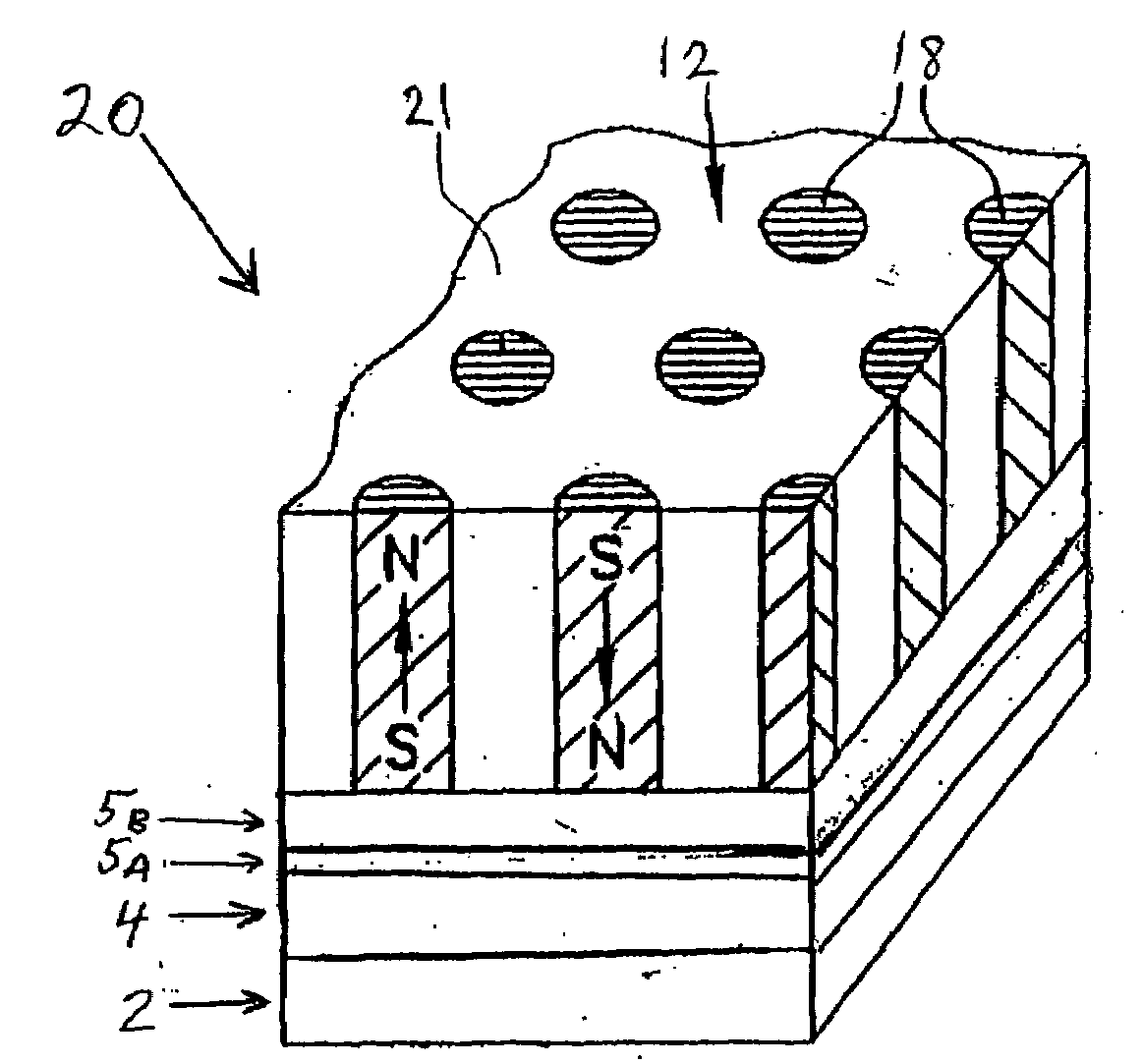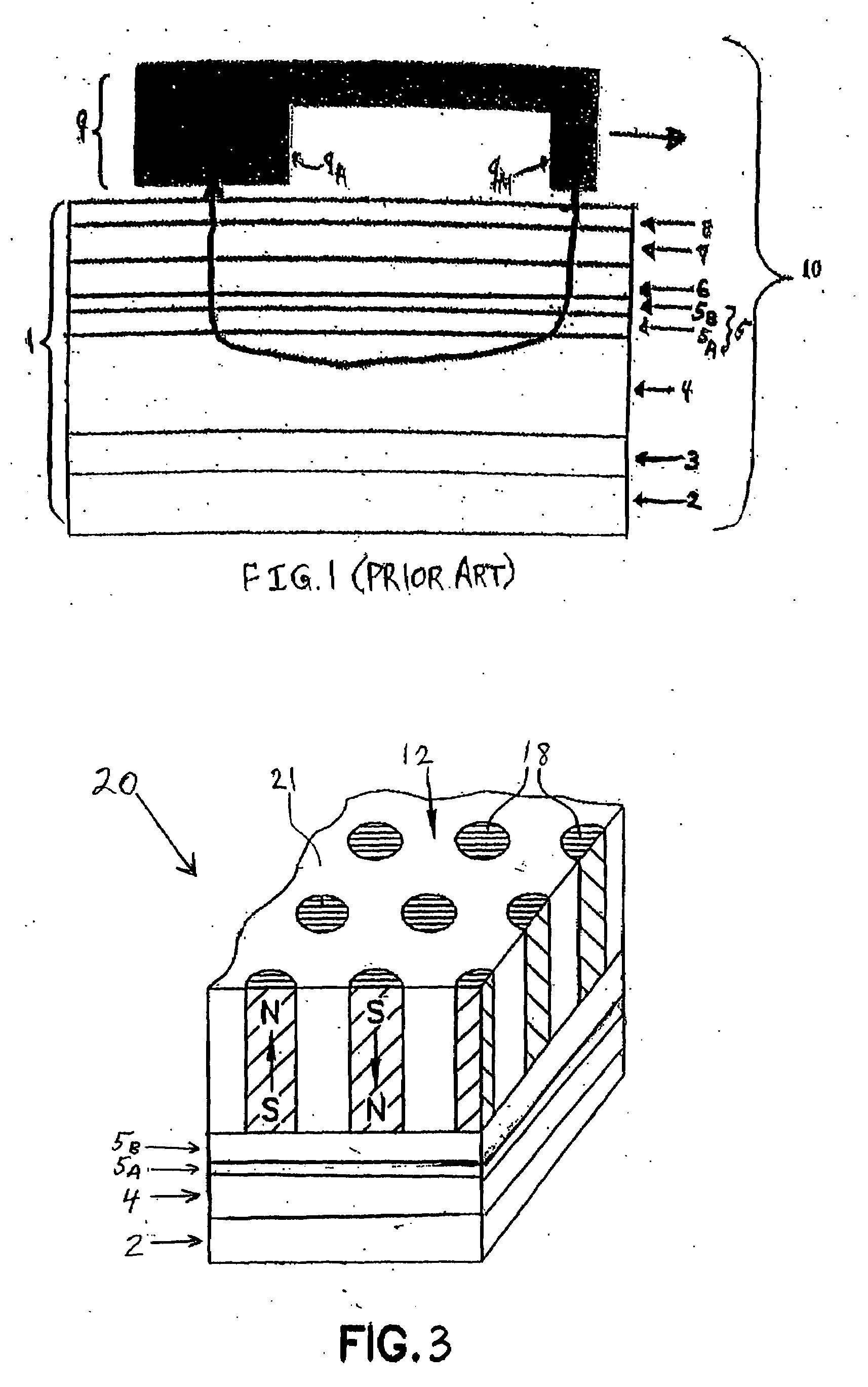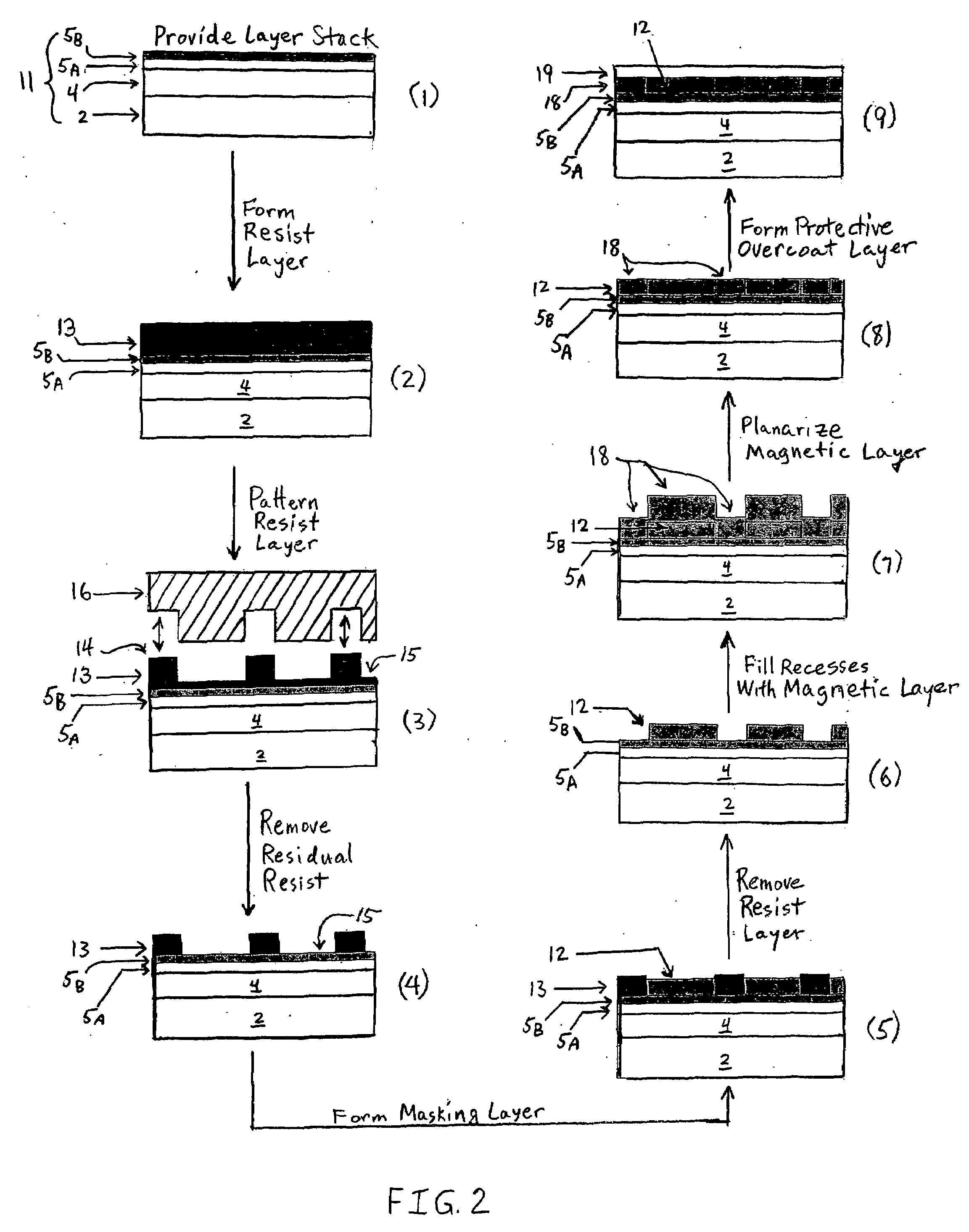Process for fabricating patterned magnetic recording media
a technology of patterned magnetic recording media and processing method, which is applied in the direction of recording information storage, instruments, and supporting parts with magnetic layers, etc., can solve the problems of noise generation during reading, low recording bit size or area, and high data/information storage density
- Summary
- Abstract
- Description
- Claims
- Application Information
AI Technical Summary
Benefits of technology
Problems solved by technology
Method used
Image
Examples
Embodiment Construction
[0062]The present invention addresses and effectively obviates the above-described problems attendant upon forming patterned magnetic layers and devices comprising same, e.g., servo patterned, track patterned, and bit patterned magnetic disk recording media, while maintaining full compatibility with all aspects of automated manufacturing processing for pattern formation in magnetic layers. An advantage of the present method is increased flexibility in the choice of hard mask materials vis-á-vis other fabrication methodologies. In addition, the inventive methodology can be practiced in large-scale, cost-effective manner for the manufacture of various types of magnetic recording media without requiring capital-intensive processing techniques while minimizing the number of required patterning steps. Further, as has been mentioned, the methodology afforded by the present invention enjoys diverse utility in the manufacture of all manner of devices and products requiring pattern formation...
PUM
| Property | Measurement | Unit |
|---|---|---|
| diameter | aaaaa | aaaaa |
| width | aaaaa | aaaaa |
| width | aaaaa | aaaaa |
Abstract
Description
Claims
Application Information
 Login to View More
Login to View More - R&D
- Intellectual Property
- Life Sciences
- Materials
- Tech Scout
- Unparalleled Data Quality
- Higher Quality Content
- 60% Fewer Hallucinations
Browse by: Latest US Patents, China's latest patents, Technical Efficacy Thesaurus, Application Domain, Technology Topic, Popular Technical Reports.
© 2025 PatSnap. All rights reserved.Legal|Privacy policy|Modern Slavery Act Transparency Statement|Sitemap|About US| Contact US: help@patsnap.com



